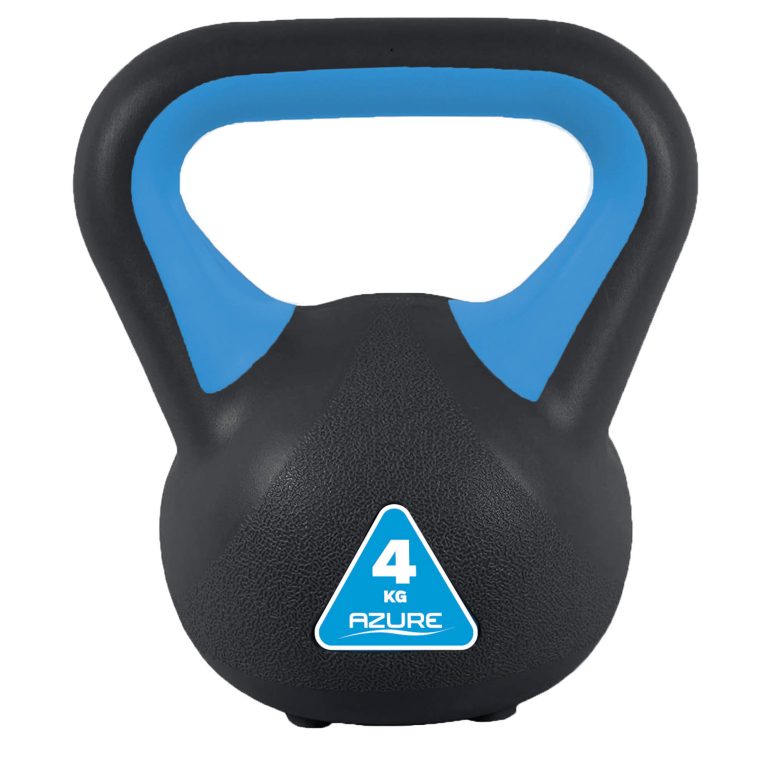If you’re new to weight training and looking to start on a safe and effective path towards a strong and fit body, we’ve got you covered. In this article, you’ll discover essential tips and techniques to help beginners like you begin your weight training journey with confidence. From finding the right gym equipment to learning proper lifting form, we’ll guide you step by step, ensuring a safe and enjoyable fitness experience. So, grab your water bottle and get ready to crush your fitness goals as we explore how beginners can start weight training safely.

Table of Contents
ToggleChoosing the Right Equipment
Understanding Your Goals
Before diving into weight training, it’s crucial to have a clear understanding of what you want to achieve. Are you aiming to build muscle mass, improve strength and endurance, or simply tone your body? Identifying your goals will help you choose the appropriate equipment and tailor your workout plan accordingly.
Consulting a Professional
To ensure you make the right equipment choices, it’s advisable to consult with a fitness professional. They can assess your fitness level, discuss your goals, and provide guidance on which equipment will be most suitable for you. Their expertise can help you make informed decisions and avoid any potential pitfalls.
Considering Your Space
When selecting equipment, it’s important to take into consideration the space you have available. Do you have access to a gym with a wide variety of machines and weights, or are you planning to set up a home gym? If space is limited, you may want to focus on compact equipment that can still provide a challenging workout without taking up too much room.
Selecting the Appropriate Weight
Determining the appropriate weight to use when starting weight training can be challenging. It’s essential to choose a weight that challenges you but allows you to maintain proper form and technique. Starting with lighter weights and gradually increasing the load as you gain strength is a prudent approach. Remember, it’s better to start with lighter weights and progress gradually than to risk injury by starting too heavy.
Creating a Workout Plan
Determining Your Frequency
When creating a workout plan, consider how often you can commit to weight training sessions per week. It’s important to strike a balance between challenging your muscles and allowing them adequate time for recovery. As a beginner, starting with two to three sessions per week is a reasonable frequency that will allow for gradual progress.
Designing a Balanced Routine
A balanced workout routine should target all major muscle groups to prevent imbalances and promote overall strength development. Incorporate exercises that target the legs, chest, back, shoulders, arms, and core. This comprehensive approach will help you achieve a well-rounded physique and minimize the risk of overworking certain muscle groups.
Starting with Basic Exercises
For beginners, it’s advisable to start with basic compound exercises that engage multiple muscle groups simultaneously. Exercises like squats, deadlifts, bench presses, overhead presses, and rows are excellent choices. These exercises provide a solid foundation for building strength, improving stability, and preparing your body for more advanced movements.
Progressing Gradually
Progression is a key aspect of any effective workout plan. As you become more comfortable with the exercises, gradually increase the intensity by adding more weight, increasing repetitions, or reducing rest time between sets. Progressive overload is essential for continued improvement and to prevent plateauing in your fitness journey.
Learning Proper Technique
Using Proper Form
Proper form is paramount in weight training to ensure optimal results and prevent injuries. Before adding weight, take the time to learn and practice correct technique for each exercise. Focus on maintaining good posture, engaging the appropriate muscles, and moving through the full range of motion. If you’re unsure about proper form, seek guidance from a fitness professional or use online resources for video tutorials.
Focusing on Control and Stability
While it may be tempting to lift heavy weights right from the beginning, it’s essential to prioritize control and stability over the amount of weight lifted. By mastering control and stability, you will build a solid foundation that allows you to progress safely and effectively. Focus on executing each movement with precision rather than rushing through the exercises.
Avoiding Heavyweights Initially
As a beginner, it’s advisable to start with lighter weights to allow your body to adapt to the demands of weight training. Heavyweights can place excessive stress on your muscles, joints, and connective tissues, increasing the risk of injury. Begin with weights that challenge you but still allow you to maintain proper form, gradually increasing the load as your strength and proficiency improve.
Taking Rest Periods
Rest periods are an integral part of any workout regimen. They allow your muscles to recover and adapt to the stress placed upon them. Aim for rest periods of 48 to 72 hours between sessions targeting the same muscle groups. While it’s essential to challenge yourself, it’s equally important to listen to your body and give it the rest it needs to recover and grow stronger.
Warming Up and Cooling Down
Importance of Warm-ups
Before jumping right into your weight training session, it’s crucial to warm up your muscles and prepare your body for exercise. Warm-ups increase blood flow, raise your body temperature, and loosen up your muscles, reducing the risk of injury. They also mentally prepare you for the upcoming workout, allowing you to focus and perform at your best.
Dynamic Stretching
After performing a warm-up, it’s beneficial to incorporate dynamic stretching into your routine. Dynamic stretches involve actively moving your muscles and joints through a full range of motion. This helps improve flexibility, enhance joint mobility, and increase muscle activation, all of which can improve your performance during weight training.
Light Cardiovascular Activity
In addition to a warm-up and dynamic stretching, incorporating light cardiovascular activity can further prepare your body for weight training. Engaging in activities like brisk walking, jogging, or cycling for five to ten minutes before your workout helps elevate your heart rate, increase blood flow, and warm up your muscles further.
Cooling Down with Static Stretches
Just as warming up is essential, cooling down is equally important. After your weight training session, take the time to cool down with static stretches. Static stretches involve holding a stretch for 15 to 30 seconds, promoting flexibility and preventing muscle tightness. Cooling down also aids in gradually reducing your heart rate and easing your body back into a rested state.
Understanding Safety Precautions
Listening to Your Body
One of the most crucial safety precautions in weight training is listening to your body. Pushing through pain or discomfort can lead to serious injury. Pay attention to any unusual sensations during exercise, such as sharp pain or joint instability, and modify or seek professional advice accordingly. Your body is unique, so it’s essential to respect its limits and train within a safe range.
Gradually Increasing Intensity
While it’s natural to want to progress quickly in weight training, it’s essential to prioritize safety by gradually increasing the intensity of your workouts. Adding weight, repetitions, or sets too quickly can strain your muscles and compromise your form. Slowly and steadily increasing the demands on your body will allow for gradual adaptation and minimize the risk of injury.
Avoiding Overtraining
Overtraining is a common mistake among beginners who are eager to see results quickly. However, overtraining can lead to burnout, decreased performance, and increased risk of injury. It’s essential to provide your body with adequate rest and recovery time between workouts. Listen to your body’s signals, such as excessive fatigue, decreased motivation, or decreased strength, and adjust your training accordingly.
Using a Spotter or Safety Equipment
For certain exercises, such as bench presses or squats, using a spotter or safety equipment adds an extra layer of safety. A spotter can assist you in completing your set if you are struggling with the weight, preventing potential accidents. Safety equipment, such as squat racks or smith machines, provide added security by acting as a safety net should you lose control of the weight.
Maintaining a Proper Diet
Fueling Your Workouts
To maximize your performance and progress in weight training, it’s essential to fuel your workouts adequately. Aim to consume a balanced meal or snack containing carbohydrates, protein, and healthy fats about one to three hours before your workout. Carbohydrates provide energy, protein aids in muscle repair and growth, and healthy fats support overall health.
Balancing Macronutrients
Maintaining a balanced diet that includes all three macronutrients (carbohydrates, protein, and fats) is crucial for supporting your weight training goals. Carbohydrates provide energy, protein repairs and builds muscle tissue, and fats aid in hormone production and nutrient absorption. Aim for a well-rounded diet that includes whole grains, lean proteins, fruits, vegetables, and healthy fats.
Importance of Hydration
Staying hydrated is often overlooked but is vital for optimal performance and recovery during weight training. Hydration supports proper muscle function, regulates body temperature, and aids in nutrient transport. It’s recommended to drink water before, during, and after your workouts, especially if they are intense or lengthy. Be mindful of your water intake throughout the day to ensure you remain adequately hydrated.
Including Sufficient Protein
Protein plays a significant role in weight training, as it supports muscle repair and growth. Consuming sufficient protein is essential to optimize your workouts. Aim to include lean protein sources such as chicken, fish, tofu, beans, or Greek yogurt in each meal. If necessary, consider incorporating protein shakes or bars to supplement your protein intake.
Avoiding Common Mistakes
Skipping Warm-up and Stretching
One of the most common mistakes beginners make is skipping the warm-up and stretching portion of their workout. Neglecting these essential steps can increase the risk of injury and negatively impact your performance. Invest the time in properly warming up and stretching before every weight training session to prepare your body for the demands ahead.
Neglecting Rest Days
While it’s important to be consistent with your workouts, it’s equally important to incorporate regular rest days into your routine. Rest days allow your muscles to recover and grow stronger. Overtraining without sufficient rest can lead to fatigue, decreased performance, and an increased risk of injury. Respect your body’s need for rest and recovery to ensure long-term progress and sustainability.
Lifting Excessive Weights
The desire to challenge oneself is commendable, but lifting excessive weights beyond your capability is a recipe for disaster. It’s crucial to maintain proper form and technique rather than focusing solely on the amount of weight you can lift. Gradually increasing weight while ensuring you maintain control and proper form will yield better results and minimize the risk of injury.
Comparing Progress to Others
Weight training is a personal journey, and comparing your progress to others can be detrimental to your motivation and self-esteem. Everyone has a unique starting point, genetics, and rate of progress. Instead of comparing yourself to others, focus on your own journey, celebrate your individual milestones, and strive for continuous improvement.
Staying Consistent and Patient
Setting Realistic Expectations
One of the keys to long-term success in weight training is setting realistic expectations for yourself. Understand that progress takes time and consistency. Expecting overnight results can lead to disappointment and frustration. Instead, focus on making incremental improvements, and celebrate each step forward along the way.
Embracing the Learning Process
Weight training is a learning process that requires time, practice, and patience. Embrace this journey and allow yourself to make mistakes and learn from them. Seek guidance from professionals, read educational resources, and learn from experienced individuals. Approach each workout as an opportunity to learn and grow, and remember that progress comes with time and perseverance.
Tracking Progress
Keeping track of your progress is essential for staying motivated and monitoring your growth. Consider keeping a workout journal where you record the exercises, weights used, sets, and repetitions performed. Regularly reviewing your journal can provide valuable insights into your progress and help you identify areas for improvement.
Celebrating Small Victories
In weight training, progress comes in various forms, not just in terms of adding more weight or increasing repetitions. Celebrate small victories along the way, such as completing a new exercise, improving your form, or feeling stronger. Recognizing and acknowledging these achievements will boost your confidence and keep you motivated to continue pushing forward.
Listening to Your Body
Recognizing Pain or Discomfort
Your body has excellent ways of communicating with you, and it’s crucial to listen to it. Pay attention to any pain or discomfort during or after your workouts. If you experience sharp or persistent pain, it’s a sign that something is wrong. Modify your exercises, seek professional guidance, or consult with a healthcare professional if needed. Ignoring pain signals can lead to prolonged injury or setbacks.
Adjusting Techniques
Weight training is a dynamic process, and as you progress, you may need to adjust your techniques. As you become experienced and proficient in certain exercises, you may need to challenge yourself with variations or progressions. Experimenting with different stances, grips, or angles can target muscle groups differently and prevent plateaus in your progress.
Seeking Professional Guidance
If you feel uncertain or overwhelmed by weight training, don’t hesitate to seek professional guidance. A certified personal trainer or strength and conditioning coach can provide valuable insights, correct your form, and tailor a program to suit your specific needs and goals. Investing in professional guidance ensures you are on the right track and reduces the risk of injury.
Avoiding Overworking Muscles
While consistency is important in weight training, overworking muscles can be counterproductive and lead to injury. Muscles need time to recover and rebuild, so avoid targeting the same muscle groups intensely on consecutive days. Design your workout routine to allow for sufficient rest days and alternate between muscle groups to achieve a balanced training program.
Creating a Supportive Environment
Joining a Gym or Fitness Community
Creating a supportive environment can significantly impact your motivation and adherence to a weight training program. Joining a gym or fitness community provides access to like-minded individuals who can offer guidance, support, and motivation. Engaging in conversations or attending group classes can help foster a sense of belonging and create a positive environment to thrive in.
Finding a Workout Buddy
Working out with a friend or family member can be a great way to stay motivated and accountable. A workout buddy can offer encouragement, push you to reach your goals, and make exercise more enjoyable. Having someone to share your fitness journey with can provide a support system and increase your chances of long-term success.
Seeking Encouragement and Accountability
Surrounding yourself with individuals who encourage and hold you accountable is instrumental in staying consistent with weight training. Share your goals with supportive friends, family, or online communities. The positive reinforcement and accountability from others will keep you focused and motivated to stay on track.
Getting Professional Feedback
In addition to seeking guidance from peers and workout buddies, periodically getting professional feedback can provide valuable insights and help fine-tune your training. Consider scheduling a session with a personal trainer or strength coach to assess your form, address any concerns, and optimize your workouts. Professional feedback can take your training to the next level and ensure you’re on the right path.
By following these comprehensive guidelines, beginners can safely start weight training and embark on their fitness journey with confidence. Choosing the right equipment, creating a well-balanced workout plan, learning proper technique, and prioritizing safety are essential steps. Additionally, maintaining a proper diet, avoiding common mistakes, and staying consistent and patient will lead to long-term progress and success. Remember to listen to your body, create a supportive environment, and celebrate each milestone along the way. With dedication and perseverance, you can achieve your fitness goals and enjoy the numerous benefits of weight training.







